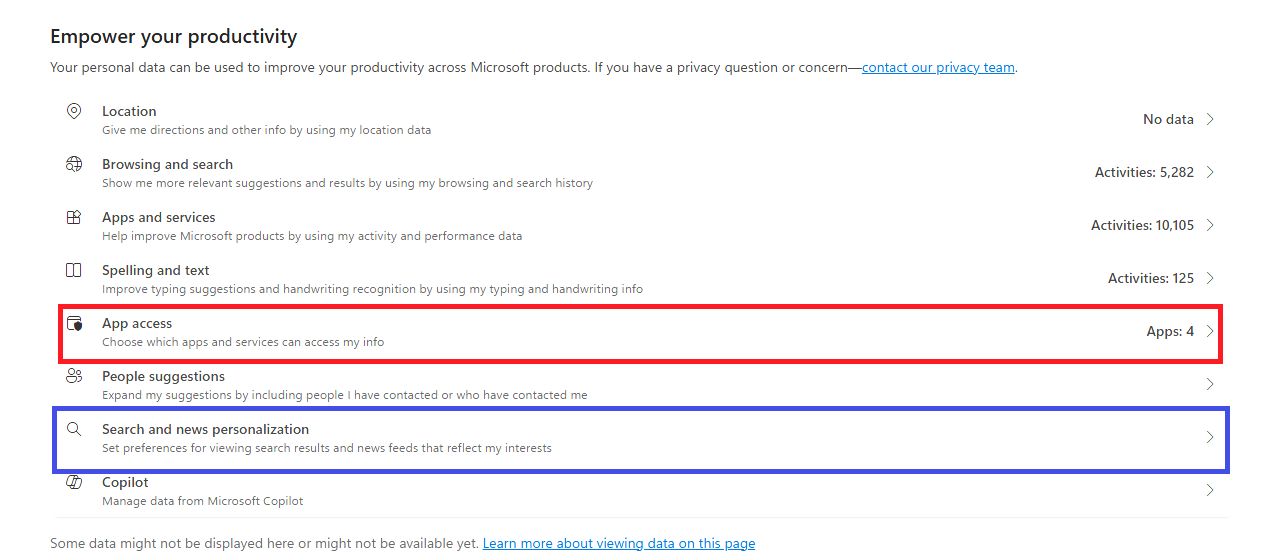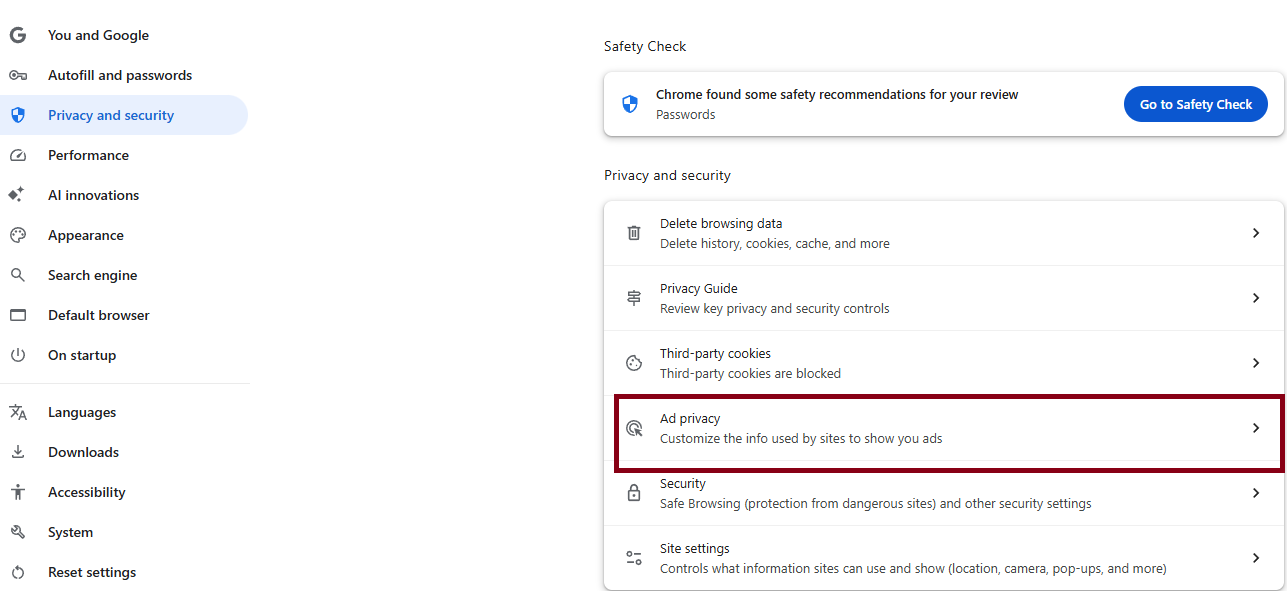
Settings to Empower Your Privacy:
Tackling Targeting Ads in
Windows & Google Chrome

Introduction
This new Dispatch is in many ways a follow-up to the second part of the Dispatch of June 1, 2025, titled, "Advertising in the Windows Operating System." Many of the advertising features discussed in this current Dispatch will already be turned off if you have performed the steps in the two Dispatches posted in June 2025.
The reason for controlling how ads are pushed at users is best expressed
by Google Chrome's Site Site-suggested ads app. "Websites and their
advertising partners can use your activity, such as how you spend your
time on sites you visit, to personalize ads for you."
The purpose of the tasks detailed in this post is to restrict what seems
like egregious profiling of users. By limiting how we are profiled
by faceless and nameless entities can improve our overall online
security.
One of the more unsettling features of using the Windows operating system is the amount of data, and the types of data, that Windows collects about its Consumers as they use various Microsoft applications. By unsetting, I mean that when you view a webpage with its advertisings, and then the next webpage you view ads for products that similar to or competitive to the ads you that were previously pushed at you. Even though I understand the technology that allows for this, I still find that abuse of my personal information unsettling. Cookies are partly responsible for this information that is collected and aggregated about us, but Windows and browsers themselves also soak up and store much more information about us. On September 7, 2025, a Dispatch posted that offered advice on how to take control of the cookies stored on your PC by websites that you have visited. This post offers advice on how to take greater control of how our personal data is collected and stored within Windows or a browser.
First, we will explore managing targeted ads in Windows and Microsoft Edge. Then we will dive into how to manage targeted advertising in Google Chrome.
At your Microsoft.com account is a feature called Privacy Dashboard. To access the Microsoft Privacy Dashboard, first sign into your Microsoft account. When you are logged into your Microsoft account, click Privacy from the Menu on the left of the MS Account page.
| The first tasks that you will be offered is to do is called a Privacy checkup. Much of the Privacy checkup only relates to the MS Edge browser, and therefore might not be relevant to your computing experiences. | |
 |
|
| The first screen that appears displays your account recovery information. This is useful information in case you lose access to your Microsoft account. In my case, there are two different methods for account recovery. One is an alternate email address. The other is a smartphone to send texts to. The actual email address and telephone number here are redacted. | The next screen will tell you if use the Microsoft Authenticator application. Unless you have downloaded and installed the Authenticator app on your phone, it is unlikely that you would be using it. Many users sign into Microsoft with the same Windows Hello PIN that use to start the Desktop. According to Microsoft Copilot AI, that here it shows Authenticator use is an error on the part of Microsoft. As on all the screens shown herein, a right pointing caret will open up a Microsoft webpage that offers additional information or other controls. On this screen, the caret opens a page that explains the Authenticator. |
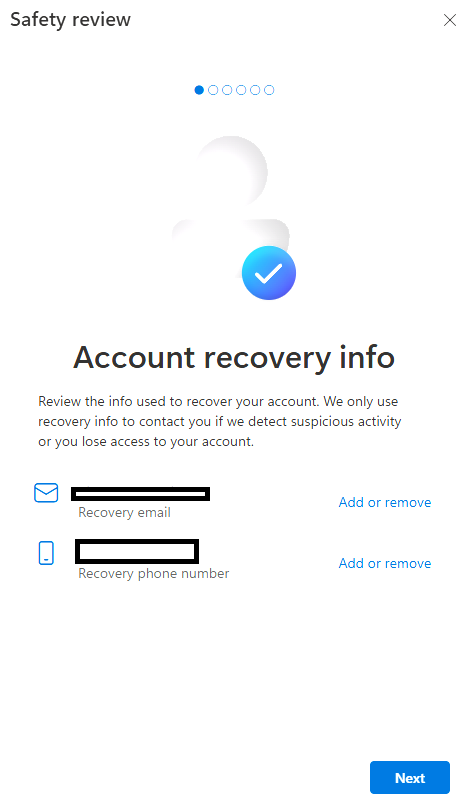 |
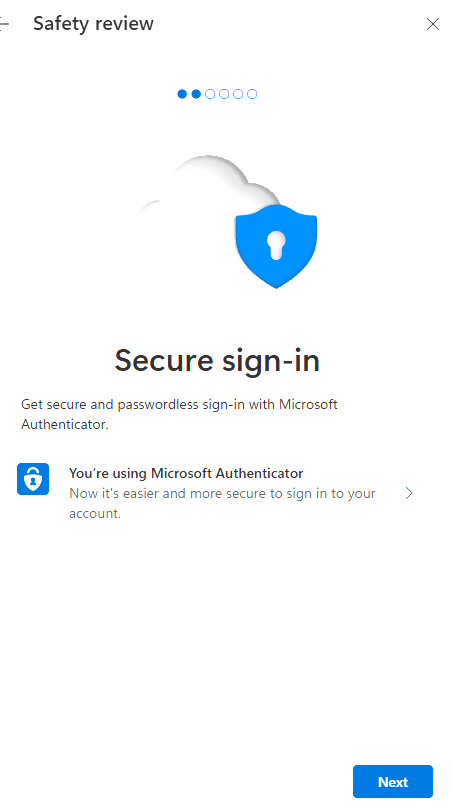 |
| The Next screen allows you to set to automatically delete browsing history when using the MS Edge browser and the MS Bing search engine. Like deleting cookies, the results of doing so might be unpredictable. | Here the strong push for MS Edge is very apparent. The right pointing caret opens up a Microsoft page that extols the advantages of using Edge as the default browser. To me, this seems redundant since Edge is installed as part of Windows 11. |
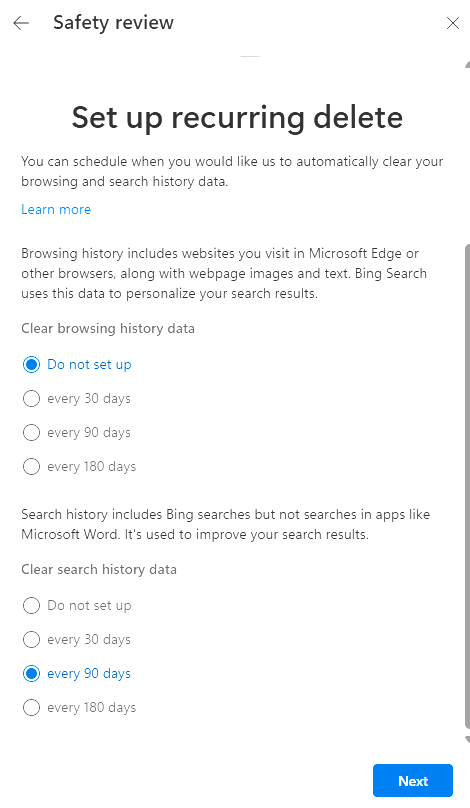
|
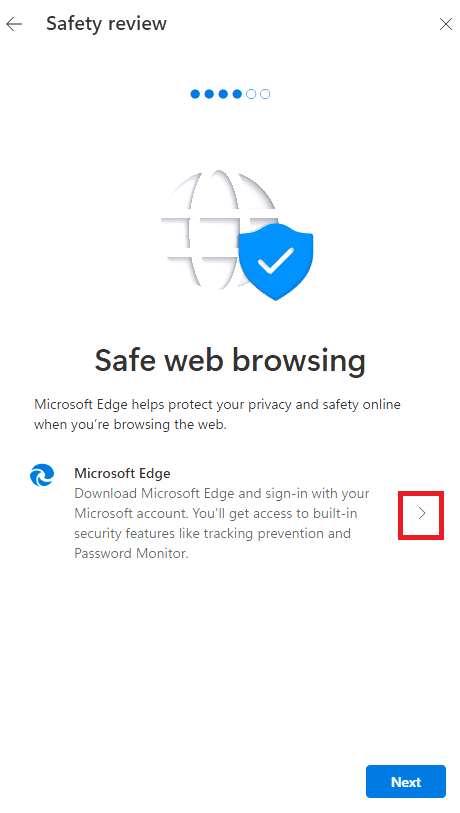 |
| The More safety resources screen has links to Microsoft webpages that are relevant to your privacy. The Change privacy settings in Windows opens to a Microsoft webpage that gives tips on changing privacy settings in Windows Settings app. Or, you can read my two Dispatches of June 1, 2025. | Microsoft 365 (Office) collects certain types of data on users. In my typical installation, all this data collection is turned off. Experiences refer to Copilot AI in Office apps. A Dispatch posted January 19, 2025, explains how to turn Copilot in Office on and off. This page from Microsoft explains what optional data is collected and how it is used. |
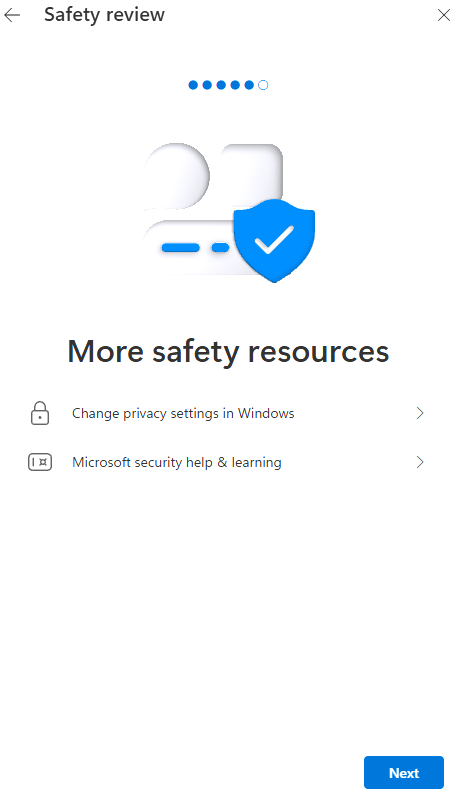 |
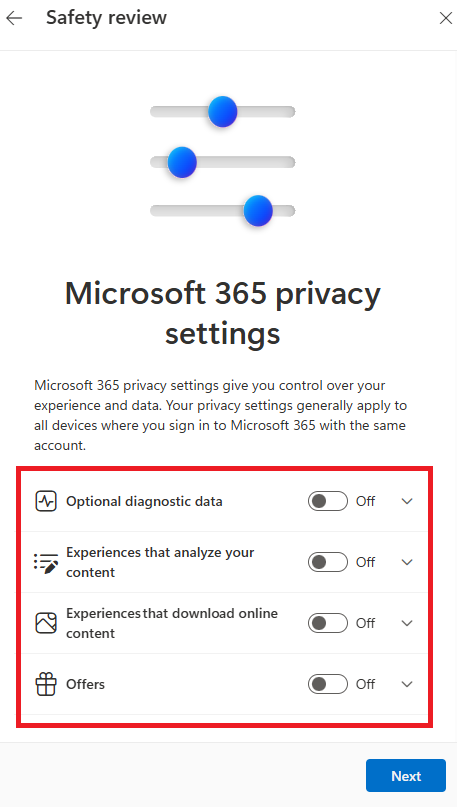 |
| Lastly, the Safety review gives you a summary of what you just clicked through. | |
.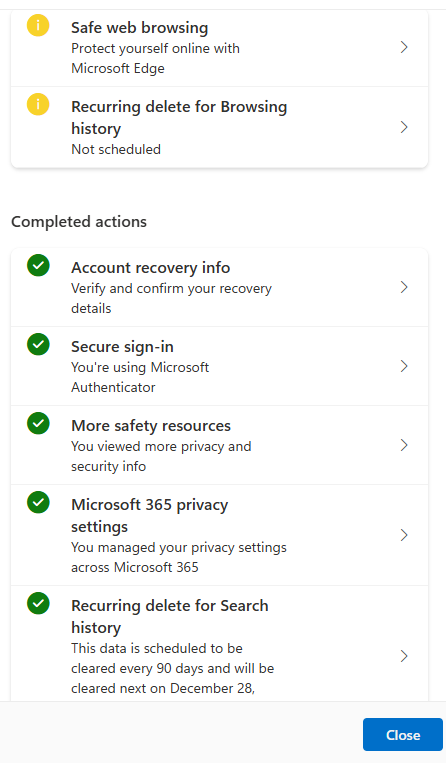 |
|
| The second menu in the Microsoft Privacy app offers more detailed views of the websites that you have visited and what data those websites might have collected on you. Of most interest here are App access and Search and news personalization. | |
|
|
|
| App access allows you to allow what web applications can collect data on you. In the what you see below, JSTOR is to allow me to get access to scholarly journals at no charge. My Files refers to what is stored on OneDrive at the Microsoft account. You can click Details to learn more about you find here. If you decide that a website listed here is a web app that you do not want accessing your data, then click Don't allow. | |
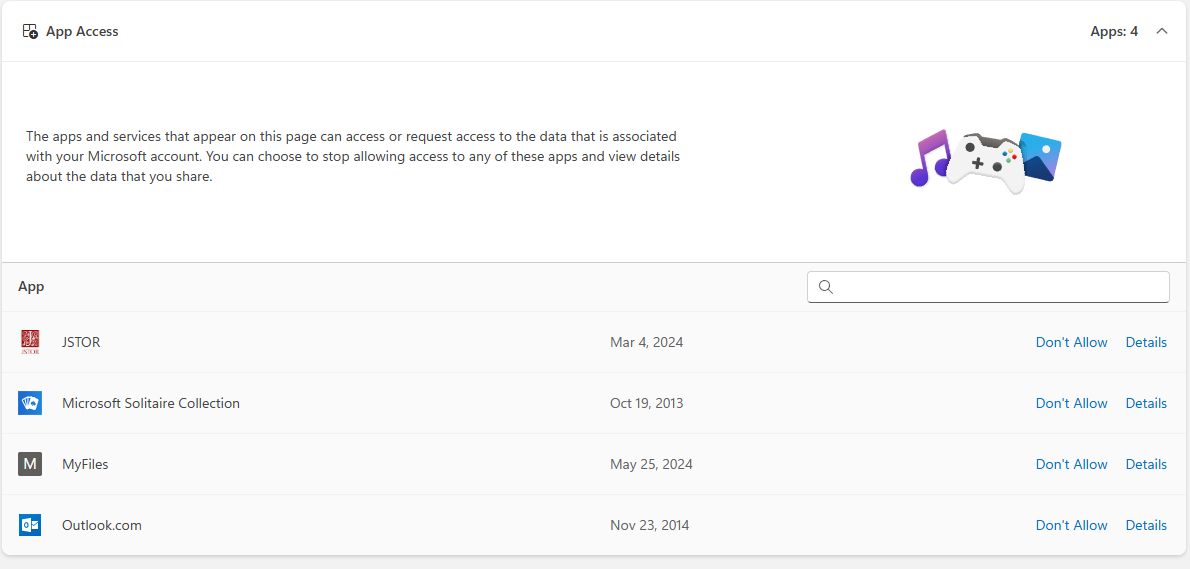 |
|
| Below is an example of the details of what data is collected and used from an application listed in app access. As you can see, JSTOR collects a minimal amount of data. The email address shown is the address I provided to JSTOR. It is not the primary email address the Microsoft knows about me. | |
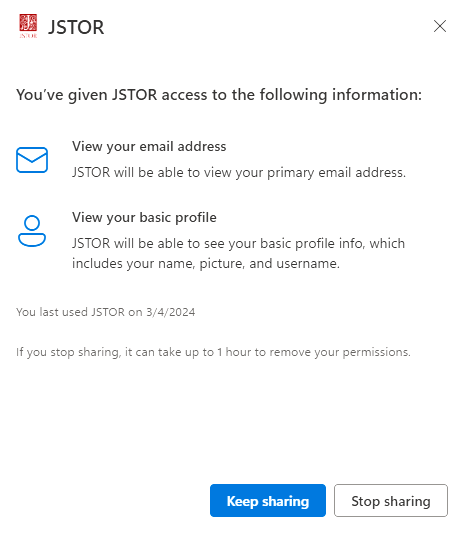 |
|
| Search and news personalization is where a great deal of information about users is collected and used. Although I do very little search using Bing, I do, however, use the MSN news feed a great deal. With the data sets shown below, a fairly complete profile of me and what interests me can be made. This data collection is almost all from news feeds. The link to the highlighted "manage your personalized ad settings" will allow you even more control over targeted ads in Windows. | |
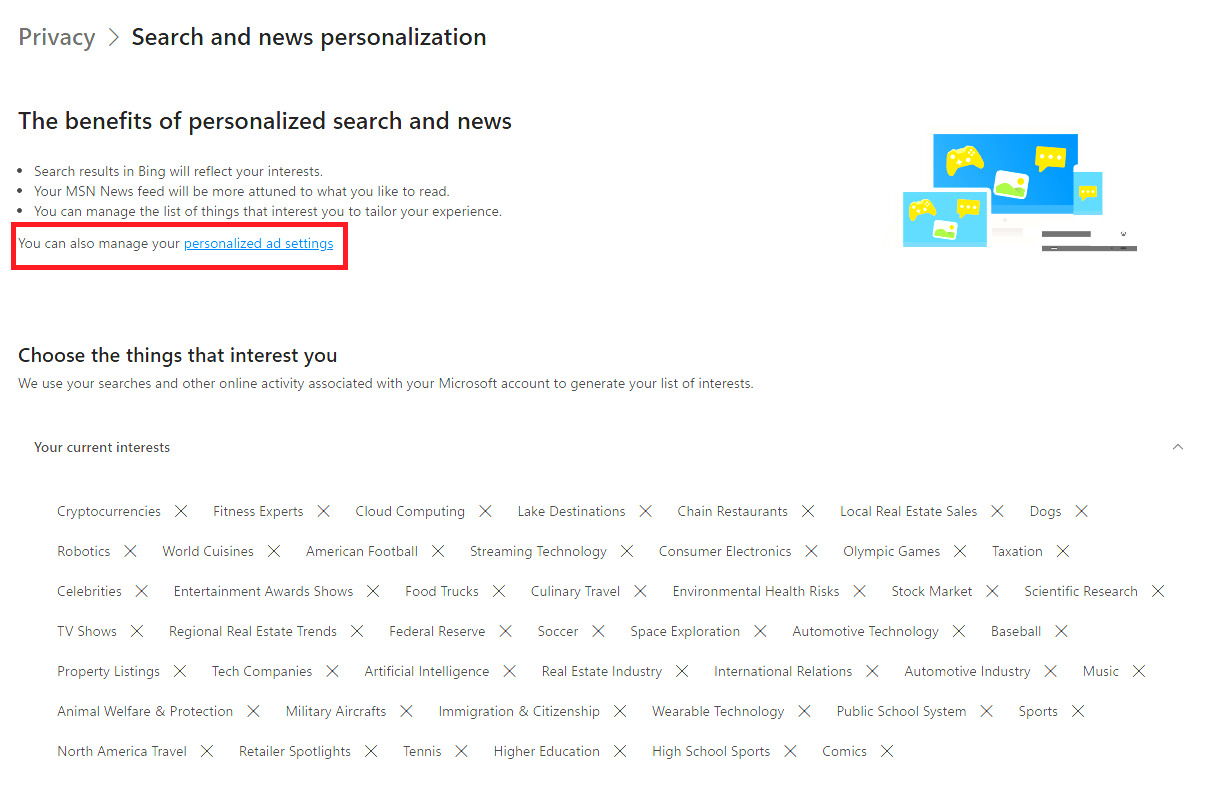 |
|
| The Personalized Ads & offers menu allows you to easily toggle on or off data sharing between different Windows applications. Turning this off prevents up personalized ads from being served up within Windows. Share my data with third parties websites controls if your data will be shared with unknown websites and vendors. | |
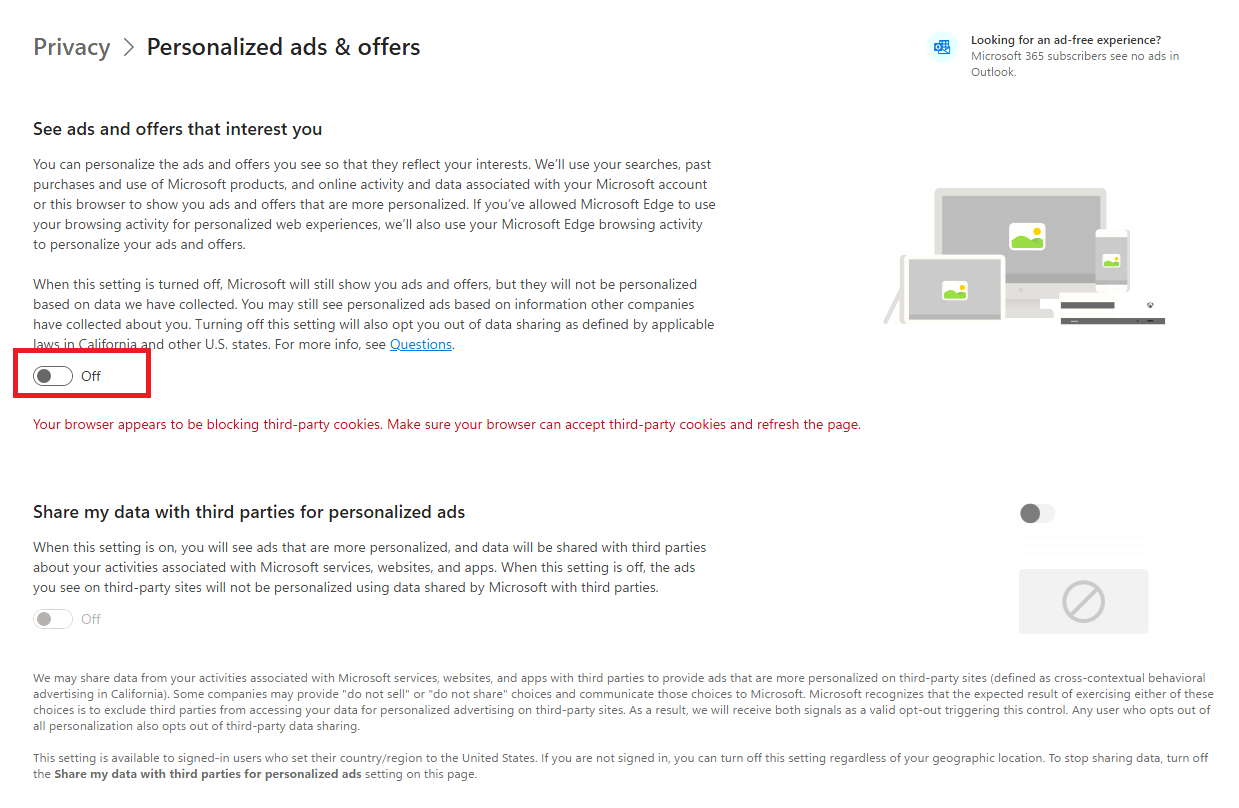 |
|
| Ad control in Google Chrome | |
|
To accomplish the same tasks as above, but when using
Google Chrome, go to Chrome Settings. Click Privacy and security
from the menu on the right. Then click Ad privacy.
|
|
|
|
|
| In Google Chrome, there are three separate settings to manage targeted advertising. Clicking the right pointing caret will open up the relevant settings for that topic. | |
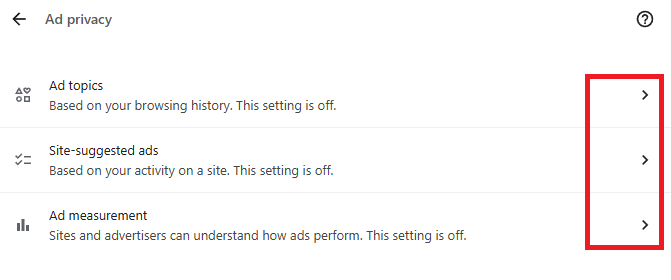 |
|
| The Ad topics control allows for targeted ads on websites based on your browsing history. Move the slider to the left to prevent one website from sharing information with other websites. | |
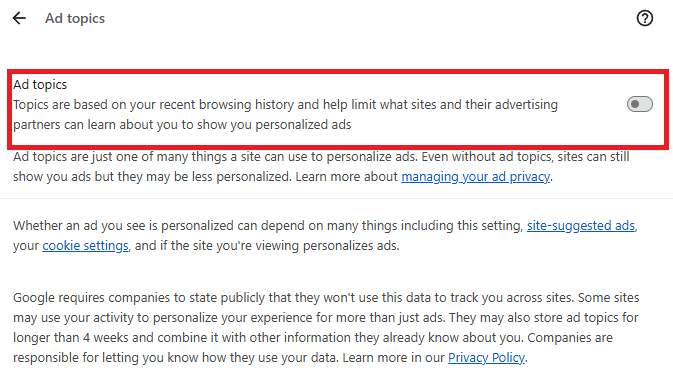 |
|
| The Site-suggested ads control allows users to allow or deny websites from accessing your usage history to push targeted ads at users. | |
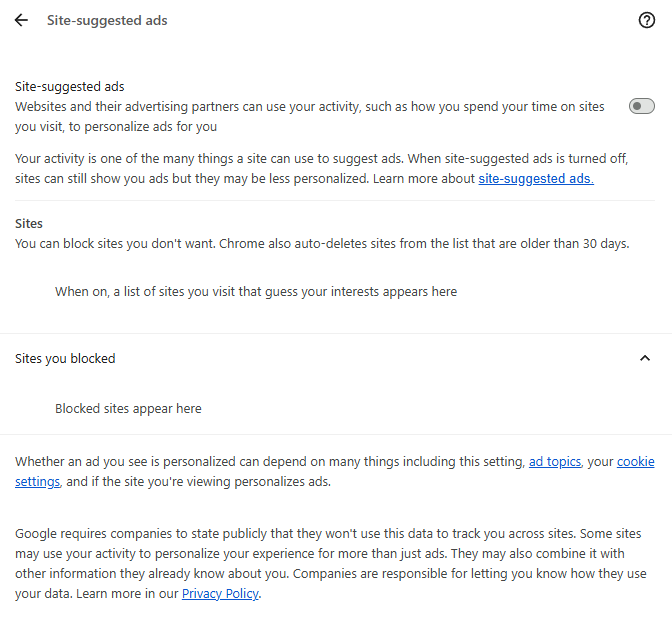 |
|
| When it is turned on, Google's Ad measurement turns your computer into a guinea pig for marketing mavens on the Internet. I have used the word "unsettling" in the Introduction to this Dispatch. This is unsettling, indeed. | |
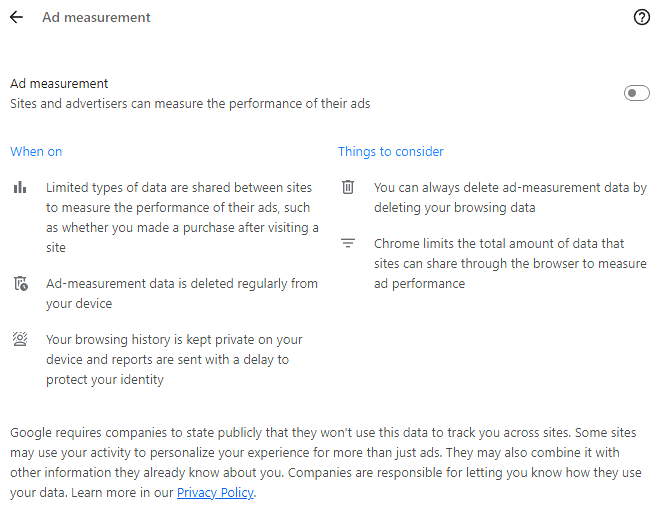 |
|
The purpose for performing these tasks is to take control of how advertisers profile users and target ads toward those profiled users. If the fact that advertisers are spying on what you do with your Windows computer or while using the Internet is unsettling to you, then go through these steps to take back control of your own person information.

Society drives people crazy with
lust and calls it advertising.
—
John Lahr
Gerald Reiff
